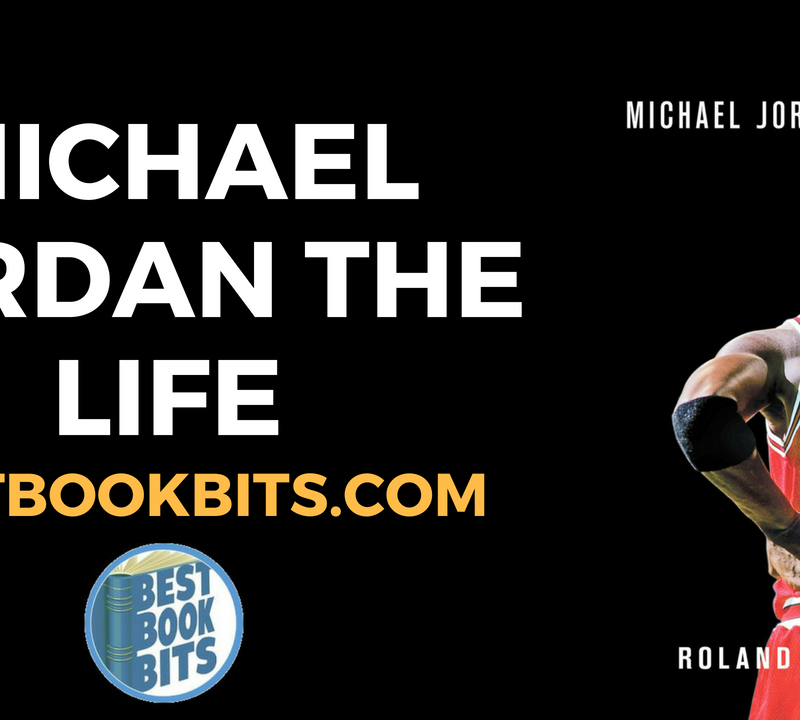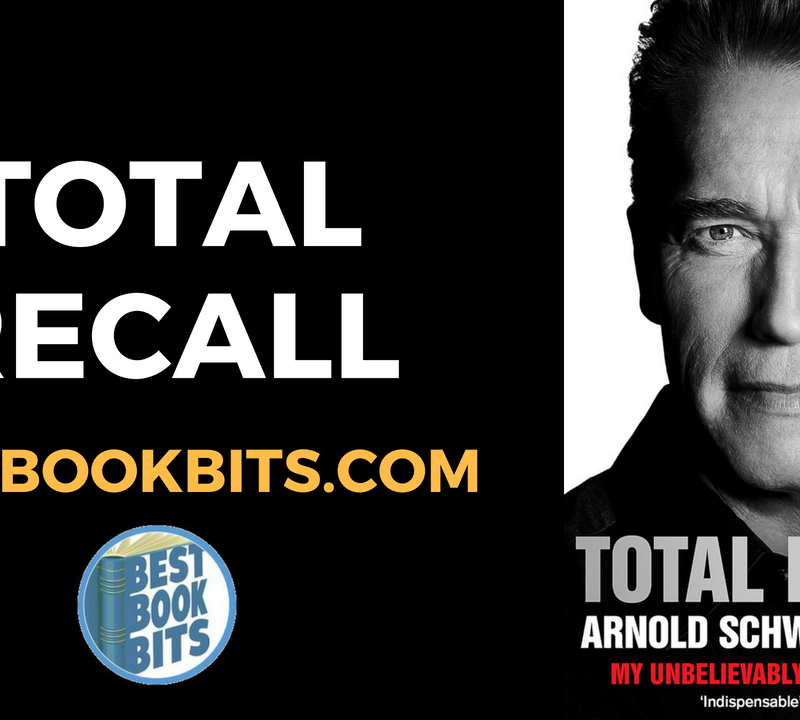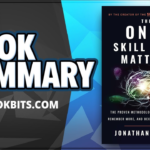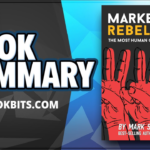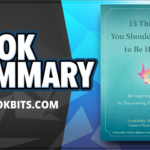★DOWNLOAD THIS FREE PDF SUMMARY HERE https://go.bestbookbits.com/freepdf
? MY FREE BOOK TO LIVING YOUR DREAM LIFE” https://go.bestbookbits.com/first-seven-steps
? SPONSOR BESTBOOKBITS BY USING PATREON https://www.patreon.com/bestbookbits
? SUPPORT BESTBOOKBITS BY CLICKING THE LINKS BELOW
- 150 PDF Summaries: https://go.bestbookbits.com/150
- Coaching Program: https://go.bestbookbits.com/coaching
- Subscribe to My Channel: https://www.youtube.com/bestbookbits?sub_confirmation=1
- Website: https://bestbookbits.com
- Instagram: https://www.instagram.com/bestbookbits
- Spotify: https://open.spotify.com/show/0q8OW3dNrLISzyRSEovTBy
- Facebook: https://www.facebook.com/michaelbestbookbits
- Book Club: https://bestbookbits.com/bookclub/
- Mailing List: https://mailchi.mp/d1dfc1907cdb/bestbookbits
Onward by Howard Schultz
Introduction
In the introduction Howard Schultz explains how he was inspired to start Starbucks in the bar he saw visiting Italy. He describes the experience of Italian cafes as human interactions that resembled an amazing theater unfolding before his eyes.
His goals he says was never only that of winning or making money, but to build a great company which also cares about people. One which would give people the feeling of the Italian bars.
The idea of striking a balance between profit and social conscience is indeed a big recurring refrain along the book.
However Starbucks was failing that objective. During the years when Howard Schultz stepped out as CEO Starbucks started being obsessed with growth and bottom line revenues.
He takes the blame for that shift as well, but in January 2008 he decided to step back in and take the reins of the company again.
Onward is the story of his comeback and of Starbucks turnaround.
Part 1: Love
Chapter 1: A Beverage Of Truth
In chapter 1 of Onward Howard Schultz talks about unprecedented decision of closing all US stores to retrain the baristas. He says it was a bold move which was likely to have many critics.
It was an admission that the company was not good enough. But Howard Schultz says that he knew that was the truth.
But at the same time, it was a galvanizing move. The author had seen the quality of Starbucks cafe and experience deteriorate more and more, and he addressing the core product was a necessity. The simple fact Starbucks was going for it was a strong message the company was going to invest in its people.
And to put people and customers back at its core.
Chapter 2: A Love Story
In chapter 2 I particularly loved the description of entrepreneurship Howard Schultz makes. He says the companies entrepreneurs build become part of them and deeply personal.
The entrepreneurial journey, he says, has high highs but also low lows that can break your heart. Entrepreneurs must love what they do so much that it’s worth the pain.
Doing anything else, for the entrepreneur, would be unimaginable
Howard Schultz says that when we love something, emotions drive us. And in reading Onward I had the perception indeed of a caring man with a big heart.
Chapter 3: Surfacing
Howard Schultz explains about his humble upbringing. His father was a blue collar delivery worker and when he fell and broke hip and ankle he was simply sent home.
No health care coverage, no severance payment, no nothing.
He deeply believe people deserved better than that.
But just as tragic for Schultz was the fact his father never found fulfillment in his work. Work should be fulfilling, Howard Schultz thought.
And he wanted to build that kind of company that his father never got the chance to work for.
And to build such a company, one needs intent, process and heart.
Chapter 4: Nothing Is Confidential
Howard talks here about an internal memo he wrote and how painful it was to see it leaked.
And yet that reminded him two things: one, that Starbucks needed to be more active in digital media. It needed to have the power to tell its own story, rather than being the victim of a rumor mill.
And the second was that as long as he spoke from his heart, he would be fine. He says:
Chapter 5: Magic
Chapter 5 is especially interesting because Howard was facing a dilemma: following his heart or the data.
Customers loved the sandwich cheese they were serving, but the melted and burned cheese was destroying the coffee aroma. And the coffee aroma was at the core of Starbucks.
Howard Schultz was not interested in finding a compromise.
Chapter 6: Loyalty
The major lesson learned is never to let success get to your head. Schultz says Starbucks never did… Until some did.
Chapter 7: Believe
The economy during the crisis was into a tailspin.
I found it interested that Howard Schultz was not sleeping before he stepped back as CEO. He wondered in the middle of the night what he was going to say.
The message here for me was that we all, all have our weak moments.
Part 2: Confidence
★DOWNLOAD THIS FREE PDF SUMMARY HERE https://go.bestbookbits.com/freepdf
? MY FREE BOOK TO LIVING YOUR DREAM LIFE” https://go.bestbookbits.com/first-seven-steps
? SPONSOR BESTBOOKBITS BY USING PATREON https://www.patreon.com/bestbookbits
? SUPPORT BESTBOOKBITS BY CLICKING THE LINKS BELOW
- 150 PDF Summaries: https://go.bestbookbits.com/150
- Coaching Program: https://go.bestbookbits.com/coaching
- Subscribe to My Channel: https://www.youtube.com/bestbookbits?sub_confirmation=1
- Website: https://bestbookbits.com
- Instagram: https://www.instagram.com/bestbookbits
- Spotify: https://open.spotify.com/show/0q8OW3dNrLISzyRSEovTBy
- Facebook: https://www.facebook.com/michaelbestbookbits
- Book Club: https://bestbookbits.com/bookclub/
- Mailing List: https://mailchi.mp/d1dfc1907cdb/bestbookbits
Chapter 8 A Reservoir Of Trust
Howard says he wanted to return to the roots, but it must have not been as a way of dwelling on their storied history. He had to go back to the roots while reinventing and innovating.
He would not cast blame on anyone, and the number one priority was that of instilling back confidence in the company’s future.
As a website on social interactions, I found it particularly interesting when he talked about “reservoir of trust”. Howard says that during the years, with exceptional employee benefits and respect, he had earned “points” with his employees he could now use in the difficult times.
This is basically the same principle of The Social Exchange Rule applied over time. And he’s right, “deposits” do apply over time as well.
One thing I didn’t agree 100% with Howard was when he talks about competitor and he says Starbucks needed to “differentiate itself”. I think a company with strong roots doesn’t need to “differentiate” itself.
Like Simon Sinek so well explains in Start With WHY, it’s the commodity producers that need to differentiate themselves. The companies with a soul and strong values don’t worry about differentiating.
Indeed soon after he explains that Starbucks had to show how their experience and customer relationships was not the same as a fast food business. It wasn’t simply based on a transaction, but there was added human value.
Then Howard talks further about the competition and says that McDonald could actually serve well to Starbucks as a strong motivator. He is basically pointing out here the rule of out-group / in-group. We all feel closer and more emboldened when there’s an “enemy” outside
Partners, customer and shareholders
Howard says he puts partners first, then customers, then shareholders. To create long term value for shareholders a company must create value for the employees and their customers first.
Which is not what always happens under pressure of Wall Street. He was going to change that. By slowing the opening of new stores first and putting the customer experience back on pole position.
Chapter 9: A New Way To See
Howard was going to put Starbucks core product first: without great coffee Starbucks had no reason to exist. Starbucks had to be the coffee authority.
Chapter 10: Playing To Win
Howard says the company too often had play on the defensive. Missing the earnings estimate was the primary fear and the primary motivator behind Starbucks’ actions.
It was scandalous for him that Starbucks’ coffee was rated behind McDonald’s. So he would first of all restart grinding beans directly in the store, something that had been scrapped in a push to serve customers faster.
Chapter 11: Elevating The Core
Howard Schultz eliminated comps figure reporting as one of the main culprit in driving short-term thinking.
He refers once to walking into a store and seeing a bunch of stuffed animals for sales. They had nothing do with coffer or Starbucks, but the store managers said they were great for sales and had a big profit margin.
That was the mentality he needed to stamp out.
Chapter 12: Get In The Mud
Howard Schultz says that Starbucks mentality had become that of big numbers. A bad store, a non perfect cup of coffee or an unhappy customer meant nothing with the big numbers.
But they forgot that… “ones” add up.
The new mindset he wanted, instead, was to start from the core of what Starbucks was. One cup of coffee at a time.
Chapter 13: A Reason To Exist
Howard Schultz didn’t particularly liked external consultants but decided to give them a try. And was very pleased with the top global leaders retreated a consultant firm organized.
He presented there his “Transformation Agenda”, and was particularly touched seeing the line of people forming to sign their copy of the mission statement.
Chapter 14: Benevolence Inside
The author says Starbucks’ coffee is exceptional, but that emotional connection is their true value proposition. And it’s something, he says, too subtle for many business-people and cynics to appreciate or replicate.
He also speaks here about the importance of their Fairtrade initiatives.
Chapter 15: Beyond The Status Quo
Chapter 15 of Onward is all about the digital world and the new push of customers interaction he wanted to champion. Building a website to collect customers’ feedback and idea was the first step.
Chapter 16: Bold Moves
Howard Schultz talks about his colleague, Costco CEO Jim Sinegal, a hero of ethical retail entrepreneurship and a protagonist in Leaders Eat Last by Simon Sinek.
Jim told him never to lose his customers because re-acquiring them after they were gone was going to be much more difficult and expensive.
And Howard started introducing reward cards.
Part 3: Pain
Chapter 17: Whirlwind Starbucks
Howard talks about critics he received, especially from Wall Street, for his decisions.
He says that Starbucks is not a coffee company serving people, but a people’s company serving coffee, and human behavior is paramount because it’s much harder to change than a recipe or a marketing strategy.
That’s what most of his critics never understood.
He says that he realized later on how the good decisions he made has something in common while the bad ones didn’t. The good ones:
- Were right and engaged partners (Starbucks’ employees)
- Was right for customers and met their needs
- Was right for the business
Howard talks about a few more frustrations here, including how he feels it’s unfair that while Wall Street was taking the world down with them, Starbucks had become a symbol of excesses with the “$4 latte”.
Chapter 18: A Lethal Combination
Howard talks here about the outdated in-store technology and of all the bloated expenses Starbucks was running.
He says that growth had taken precedence over everything and was the carcinogen that had invaded the company. Many of the newly opened stores didn’t even make sense from a financial perspective.
Chapter 19: Reverence Building
Those close opened without paying attention to the returns they would bring had to be closed. Howard here clearly described how painful it was for him to close stores and let go of workers.
It was 600 in the end. 70% of which had been opened in the last 3 years, during the crazy push for growth and expansion.
He describes of all the steps he took to make sure he was giving the laid off workforce a chance.
Chapter 20: No Silver Bullets
Howard Schultz talks about the big success the customer card turned out to be, but how there was no silver bullet.
I found it particularly interesting that the author fell for a “silver bullet mentality”, trying to find something that would change his business overnight.
And in that desperate quest, he embraced a product, an Italian sorbetto, that turned out to be a failure.
Chapter 21: I Know This To Be True
Chapter 31 of Onward then goes into the pain of having to let go of office staff.
He says that as much as they opened stores haphazardly, so people were hired at times to cover up processes deficiencies. Throwing bodies at problems instead of fixing the root causes.
He said again they tried to do it as emphatically as possible and providing with more benefits than most other similar companies would.
Some employees understood and thanked, but some others didn’t. And Howard tells of a few email he received from some fired employees that hurt him to read.
He says he read every name of people being fired, not allowing them to become just a number on a spreadsheet.
He also made sure to speak about it and give people the chance to vent. Publicly. He hoped that talking to him and doing so publicly would reinforce the very values some felt he was tarnishing.
It reminded me a bit of Ray Dalio, when he says that you “must love the person you shoot”. But Howard seems much more human than Dalio.
Part 4: Hope
Chapter 22: Truth In Crisis
Howard Schultz talks about how inefficient Starbucks’ supply chain was.
Particularly interesting as a leadership lessons learned for me was the fact that the supply chain had no real supply chain expert. Starbucks used to promote from within, what the author calls “stretch hires”.
But it seems like sometimes one does needs experts.
Starbucks’ supply chain didn’t need generalists to learn on the job, it had become a very complex matter that needed specialists.
Chapter 23: A Galvanizing Moment
Schultz talks about the 10.000 people strong conference he was being pressured to scrap to save costs but that he was adamant to keep.
He says he needed to see all the leaders and store manager all together to reignite the passion and remind of the company’s values.
He says it was a huge success and a game changer.
Chapter 24: Nimble Someone
Chapter 24 of Onwards talks about the “free coffee for voters” campaign they managed to launch in a few weeks and which turned out to be a huge success.
It was a reminder that it was still possible to move quickly and that social media was going to be a game changer when used smartly.
It also reminded me of how Onwards used the political arena and the “vote” campaign to get some free advertising, an advertising “trigger.”
Chapter 25: Plan B
Chapter 25 deals with cost cutting initiatives and the Lean methodology Howard implemented. He says he was skeptical, but soon changed his mind and the results were great.
Chapter 26: Stay The Course
Chapter 26 of Onwards talks about the investors conference. I was particularly intrigued of how worried Howard was until a former MBA player in his board of directors gave a pep talk behind curtains that helped everyone step up and deliver.
Part 5: Courage
Chapter 27: Innovate For More
Howard says that a good idea is not enough. A great execution is equally important. But instead of asking why, he would ask “why not”, and launched a R&D branch to come up with new products.
Chapter 28: Conviction
Howard says he doesn’t believe leadership has a single recipe for success, but he believes great leadership has two major attributes:
- Confidence about the destination
- The ability to bring people along
Chapter 29: Connecting Dots
Chapter 29 was interesting regarding how watchful famous people must be in front of cameras. Howard said Starbucks saw the situation in the UK being quite dire.
The journalist interview a UK government official soon after whom, in turn, lashed out against Starbucks.
Lesson learned.
Chapter 30: Balance The First
Howard Schultz talks here about the importance of charm, values and human connection. And at the same time he wants to do it at scale. He wants the magic of the coffe, but also wants it replicable and of the same quality over and over.
This reminded of Michael Gerber when he says McDonald is as passionate about burgers as any other burger enthusiast, but he made it at scale.
Howard wanted to balance efficiency with romance, humanity and profitability.
The lean methodology actually allowed baristas at Starbucks to be less stressed, move quicker and also have more time to talk to customers.
Chapter 31: Conscience
Traveling in Rwanda Howard wonders how much can one person or a single company do. He did not have an answer, but he knew that doing nothing was unconscionable.
Chapter 32: Winning Sitting
As the economy rebounds, Starbucks turned the corner for good.
Chapter 33: Nĭ Hăo
The book ends with Howard Schultz that, after fixing the US business, looks at expansion again. Starting with China.
EPILOGUE
The epilogue stresses again the importance of balance.
Howard says that growth is a tactic, not a strategy. And Starbucks lost its way when growth became a strategy.
Again Howard stressed the importance of the a sustainable economical model and the emotional attachment with the customers.
And of course, of being an authority in the core business. I particularly loved when he said:
The proof of Starbucks’ coffee authority will always be in the cup
★DOWNLOAD THIS FREE PDF SUMMARY HERE https://go.bestbookbits.com/freepdf
? MY FREE BOOK TO LIVING YOUR DREAM LIFE” https://go.bestbookbits.com/first-seven-steps
? SPONSOR BESTBOOKBITS BY USING PATREON https://www.patreon.com/bestbookbits
? SUPPORT BESTBOOKBITS BY CLICKING THE LINKS BELOW
- 150 PDF Summaries: https://go.bestbookbits.com/150
- Coaching Program: https://go.bestbookbits.com/coaching
- Subscribe to My Channel: https://www.youtube.com/bestbookbits?sub_confirmation=1
- Website: https://bestbookbits.com
- Instagram: https://www.instagram.com/bestbookbits
- Spotify: https://open.spotify.com/show/0q8OW3dNrLISzyRSEovTBy
- Facebook: https://www.facebook.com/michaelbestbookbits
- Book Club: https://bestbookbits.com/bookclub/
- Mailing List: https://mailchi.mp/d1dfc1907cdb/bestbookbits

